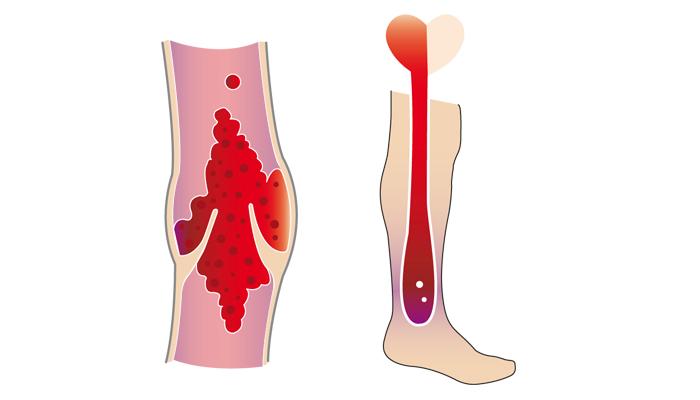Thrombosis, DVT and Pulmonary Embolism
Symptoms Of Blood Clots and Obstructions
Thrombosis refers to the formation of a clot or thrombus inside a blood vessel, which obstructs the flow of blood into the circulatory system. Thromboembolism is a general term used to describe both thrombosis and its main complication, embolisation.
Embolisation occurs when a thrombus becomes free-floating (an embolus, plural emboli) and migrates from one part of the body (through circulation) and causes a blockage (occlusion) of a blood vessel in another part of the body. Deep vein thrombosis (DVT) happens when a blood clot forms in a deep vein, mainly as a result of prolonged immobility.
DVT most commonly occurs in the deep veins of the lower leg and can spread up to the deep veins in the thigh.
Pulmonary embolism (PE) is a blockage of the pulmonary artery (or one of its branches), usually when a venous thrombus becomes dislodged from its site of formation and embolises to the arterial blood supply of one of the lungs.
Post-thrombotic Syndrome happens if DVT damages the valves in the deep veins, so that instead of flowing upwards, the blood pools in the lower leg. This can eventually lead to long-term pain, swelling, and in severe cases, ulcers on the leg. Post-thrombotic syndrome refers to the long-term effects that can occur after venous thrombosis. It is characterised by chronic pain, swelling, heaviness and other signs in the affected limb, and in severe cases, venous ulcers may develop. Ulcers are the most common complication of deep vein thrombosis. Other complications may include purpura, eczematoid reaction, dermatitis, pruritis and ulceration.
Compression therapy can help in preventing thrombosis and deep vein thrombosis by preventing the formation of clots when circulation slows, and increasing fibrinolytic activity in the vein wall, wherein a fibrin clot, the product of coagulation, is broken down.






